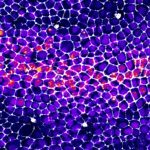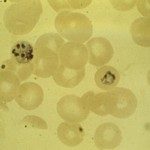Link to Pubmed [PMID] – 34626896
Link to HAL – hal-03651098
Link to DOI – 10.1016/j.gde.2021.09.004
Current Opinion in Genetics and Development, 2022, 72, pp.8-14. ⟨10.1016/j.gde.2021.09.004⟩
Programmed cell death, notably apoptosis, is an essential guardian of tissue homeostasis and an active contributor of organ shaping. While the regulation of apoptosis has been mostly analysed in the framework of a cell autonomous process, recent works highlighted important collective effects which can tune cell elimination. This is particularly relevant for epithelial cell death, which requires fine coordination with the neighbours in order to maintain tissue sealing during cell expulsion. In this review, we will focus on the recent advances which outline the complex multicellular communications at play during epithelial cell death and cell extrusion. We will first focus on the new unanticipated functions of neighbouring cells during extrusion, discuss the contribution of distant neighbours, and finally highlight the complex feedbacks generated by cell elimination on neighbouring cell death.




